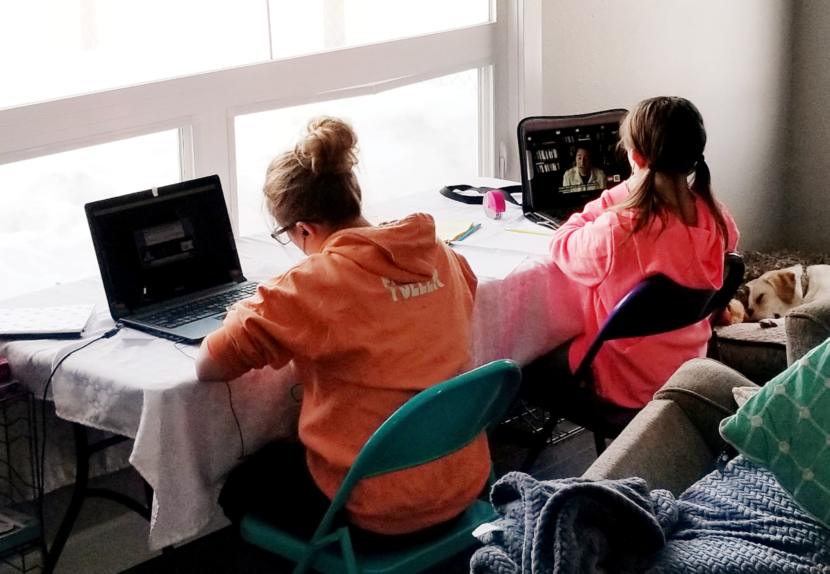
Like a lot of teachers, when Derek Reed learned that classes would be taught entirely online back in March, he worried.
“My first thought went to ‘Oh my goodness, what’s going to happen for students who don’t have access to technology and don’t have access to support’,” Reed said.
Reed said he, like many teachers in the district, spent weeks trying to contact students and families. But, as time went on, getting in touch with unresponsive students became more and more difficult. He says he had little to no contact with about 25 students.
“My guess is you could talk to any teacher in Anchorage and across Alaska, and they would tell you there were some students they never got a hold of,” Reed said.
Reed said he worked with other teachers and school counselors. Principals even made house calls in-person to check on students. Eventually, Reed realized he needed to focus on the students that were showing up and working.
“Because once you’ve exhausted all your options, there’s not a lot you can do,” Reed said.
The Anchorage School District can’t pinpoint the exact number of students who didn’t participate in online learning last spring.
One data point the district used to track student participation were logins to online platforms. Engagement was at its lowest during the third week of online learning, with an average of about 39% percent of high school students logging on. It was an issue for districts across the country.
ASD’s engagement numbers rebounded to about 83% percent by the end of the semester. But it’s unclear whether a login meant sustained engagement or if it was simply one time.
Reed worried about students who were not able to fully engage online because of their home environment — like one student, who finally got in touch with him just a few weeks before school ended to get a Chromebook.
Reed said he knows there was a language barrier at her home, and she was taking care of younger siblings as well as an elderly relative.
“It was really challenging to get a hold of her and when we did, those would be the things,” Reed said. “I do remember she contacted me on her iPhone because she had been able to go to the library or go somewhere where there was WiFi, so she had a phone that only worked when connected to WiFi,” Reed said
This was a common story for many of his students.
According to the district, the most frequent requests from families were around basic needs like access to food and mental health support more so than access to technology.
Heading into the new school year, each of the district’s schools with a high percentage of students who qualify for free and reduced lunch will have an additional behavioral support staff person to assist with those needs.
Teachers working with students in programs for English language learners, as well as migrant and Native families, will use a case-by-case management approach to encourage student engagement. ASD Deputy Superintendent Mark Stock said the teachers will make personal contact with each family in those programs.
“And if students are not engaged or they’re not participating or logging on, they will get into the root causes, hopefully, and they will try to find out why and and take care of that,” said Stock.
The district continues to deploy Chromebooks, devices, and wifi hotspots as well.
Stock also said the district is working to allow for more flexible work schedules so teachers can be available in the evening when students were more likely to do homework and fewer parents would be working. Also, during the closure, many teachers were using their personal cell phones to call and get in touch with families. This made some teachers, including Reed, uneasy. So the district is purchasing a phone app that allows teachers to contact families via text without anyone exchanging personal cell phone numbers.
“Teachers got most of their engagement by working with students through text,” Stock said. “So we now have an app that allows that protection of privacy but allows teachers to be able to text them.”
The district and teachers are hopeful that grading student work and having more structured schedules will lead to more participation by students and families.
Reed said he’s anxious about the year ahead, but excited too.
“I can tell I have some of that positive anticipation, too, because I went to look for school supplies on my weekly shopping trip, and I was excited to do that,” Reed said.
This school year will be like nothing he’s ever seen, Reed said, but he’s looking forward to doing what he loves — which is teaching, regardless of the method.
